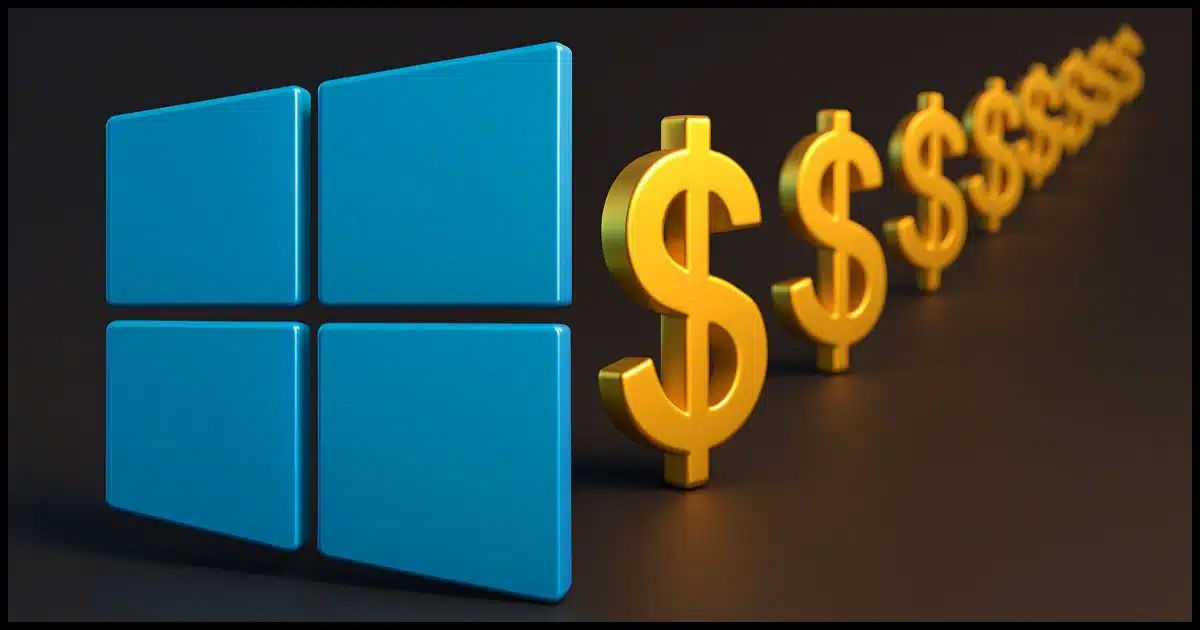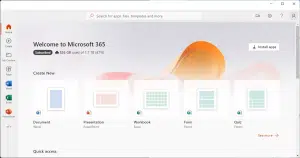There’s zero evidence it’ll ever happen.

The concern is that Microsoft will eventually start charging an annual subscription fee for Windows itself.
The fear rose when Windows 10 was originally released. With Windows 10’s end of life coming up shortly, I’m starting to hear it again and again.
I’ll be clear: there are no signs — none — that this is happening now or any time in the foreseeable future.

The Windows subscription myth
Microsoft charging for Windows monthly or annually is a recurring myth with no evidence. Fears were fueled by poor messaging and confusion over “software as a service” when Windows 10 was released. Subscriptions don’t always mean payments, and Windows itself likely won’t need one. Remember, rumors aren’t facts.
Software as a service
Back in the run-up to Windows 10’s release, someone at Microsoft used the phrase “software as a service” when speaking of Windows 10.
What they meant was that the software would be delivered as an ongoing series of downloaded updates with some possible online components, much like Windows Update and many other online services we use today. This is/was/will be nothing new.
Help keep it going by becoming a Patron.
Service as a subscription
Consider your ability to subscribe to my free newsletter, Confident Computing.
- It’s a service: a newsletter.
- It’s a subscription: you sign up for it, and it arrives periodically.
- It’s free.
Software as a service you subscribe to can work this same way. You can consider yourself as having subscribed to Windows Updates, which have been arriving free of charge periodically since you installed the operating system.
Subscription as a recurring fee
As we’ve seen above, subscriptions can be completely free. Nothing about the word subscription implies a cost.
However, many people assume that a cost is involved as soon as they hear the word. I still get asked, “How much does your newsletter cost?”, for example, even though it’s free.
Some subscriptions are not free. Your local newspaper, your favorite streaming service, your coffee-of-the-month club might all represent:
- Services (news, video, coffee)
- Subscriptions (you sign up to receive the product on a schedule)
- Fees (you pay for these service subscriptions periodically, typically once a month or once a year)
A subscription to a service can be free.
A subscription to a service can cost money.
The words subscription and service don’t tell you which it is. “Software as a service” doesn’t imply anything about how you pay for it.
Microsoft’s messaging missteps
Microsoft is known for some colossal messaging blunders. (No, Windows 10 was never going to be the “last version” of Windows.)
When questioned about whether “software as a service” would have a cost, Microsoft representatives said there were “no current plans” to make Windows a subscription. They didn’t say never. They didn’t say “no”. They left the door open a crack.
To be fair, they need to have that option. Maybe someday they’ll determine that a monthly fee for Windows is the way to go.
Unfortunately, the rumor mill took “no current plans” to imply “real soon now”. That’s totally unjustified, but unjustified speculation is what creates rumors, and what makes rumors turn into viral topics.
And of course Microsoft elected not to clarify anything, as is typical.
Consumer Windows subscriptions wouldn’t benefit Microsoft
Microsoft benefits by having Windows in as many places as possible. The upgrade from previous versions to 10 was free, and the upgrade from 10 to 11 is free. Windows comes on nearly every new PC.
They can and do make plenty of money on other services that the popularity of Windows enables.
They would be foolish to put barriers like a subscription fee in the way.1 Anything that would cause the average consumer to flee to less expensive alternatives would kneecap Windows’ dominance.
Putting a paywall in front of the huge Windows ecosystem that Microsoft already profits from enormously just doesn’t make sense.
Current Microsoft subscriptions
I think one source of fear is that this kind of transition has happened already. Microsoft Office, for decades a one-time purchase, is now promoted primarily as an ongoing paid subscription. The thinking, of course, is that if they can do it to Office, what’s to stop them from doing it to Windows?
Well, Windows is the gateway to that Office subscription and others, like OneDrive storage.
It would not surprise me if new features or programs were made available primarily via subscription — enhanced CoPilot comes to mind, though that feels very much like an experiment in progress.
But Windows itself? No.
But what if… ???
I do not believe that Microsoft will ever make Windows a paid subscription. I just don’t see it, and there’s zero indication it’s being considered at all.
But what if they did?
Like Microsoft Office before it, it’s likely they would throw in a lot of features and functionality to try to make it worth your while; maybe OneDrive space, maybe the ability to share your subscription, or maybe other things I can’t think of.
And, like Microsoft Office before it, I suspect they’d still offer a one-time purchase plan without all the additional bells and whistles.
But I just don’t see it happening. Period.
Do this
There’s no action for you to take other than to stop stressing over unsubstantiated possibilities. Keep running Windows, if you like, and keep it up-to-date, as always.
Maybe stop paying attention to the trolls, the nay-sayers, and the panicky headlines. Get your information from sources you trust.
Oh, and pay careful attention to terminology being used in general. Remember, subscription does not automatically mean payment.
Here’s a subscription, and it’s completely free: Subscribe to Confident Computing! Less frustration and more confidence, solutions, answers, and tips in your inbox every week.
Podcast audio
Footnotes & References
1: There’s a strong argument they are being similarly foolish by enforcing Windows 11’s additional hardware requirements.



“Microsoft is known for some colossal messaging blunders. ” Messaging blunders is one of Microsoft’s trademarks. The most egregious being Outlook, Outlook, and Outlook and Outlook Express.
Then there were Windows Mail, Windows Live Mail, Hotmail.
But my favorite list is:
Remote Desktop, Remote Desktop Connection, Remote Desktop App, Windows Remote Assistance, Windows App (the latest, aka Microsoft Remote Desktop, as opposed to just Remote Desktop), Quick Assist (aka Remote Assistance), and Microsoft Remote Help.